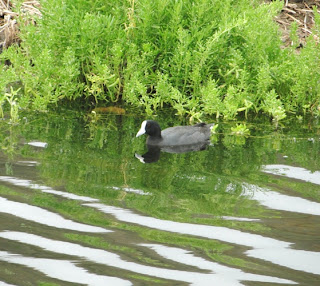This is the trail I took to get closer to Mount Waialeale on the island of Kauai. Those two post on either side of the trail were where the gate was in a scene from the movie "Jurassic Park". Parts of Jurassic Park were also filmed on the island of Oahu. But I digress. This area at Mount Waialeale is often called the wettest spot on earth, but there are actually two peaks in India that rival it for that description. The volcanic mountain has an elevation of 5,148 feet and averages more than 452 inches of rain a year or up to 350 rainy days per year. I was there in the month of February and there was no rain to speak of that day.
We took a tour that met us at our resort and drove as far as the road would allow and then we hiked for awhile to the following area.
All of these photographs are excellent references for future paintings. It was quite pleasant to visit this area and I highly recommend it . The tour guide gave interesting information on the plants as well . Below are a couple of photos of flowers on Kauai. Yes , there are plenty of Hibiscus there and poinsetta plants grow year round on all the islands.
Below is an excellent video you might enjoy (not my video). There are other You Tube videos as well about Mount Waialeale you can check out.
Thank you for visiting !



















































